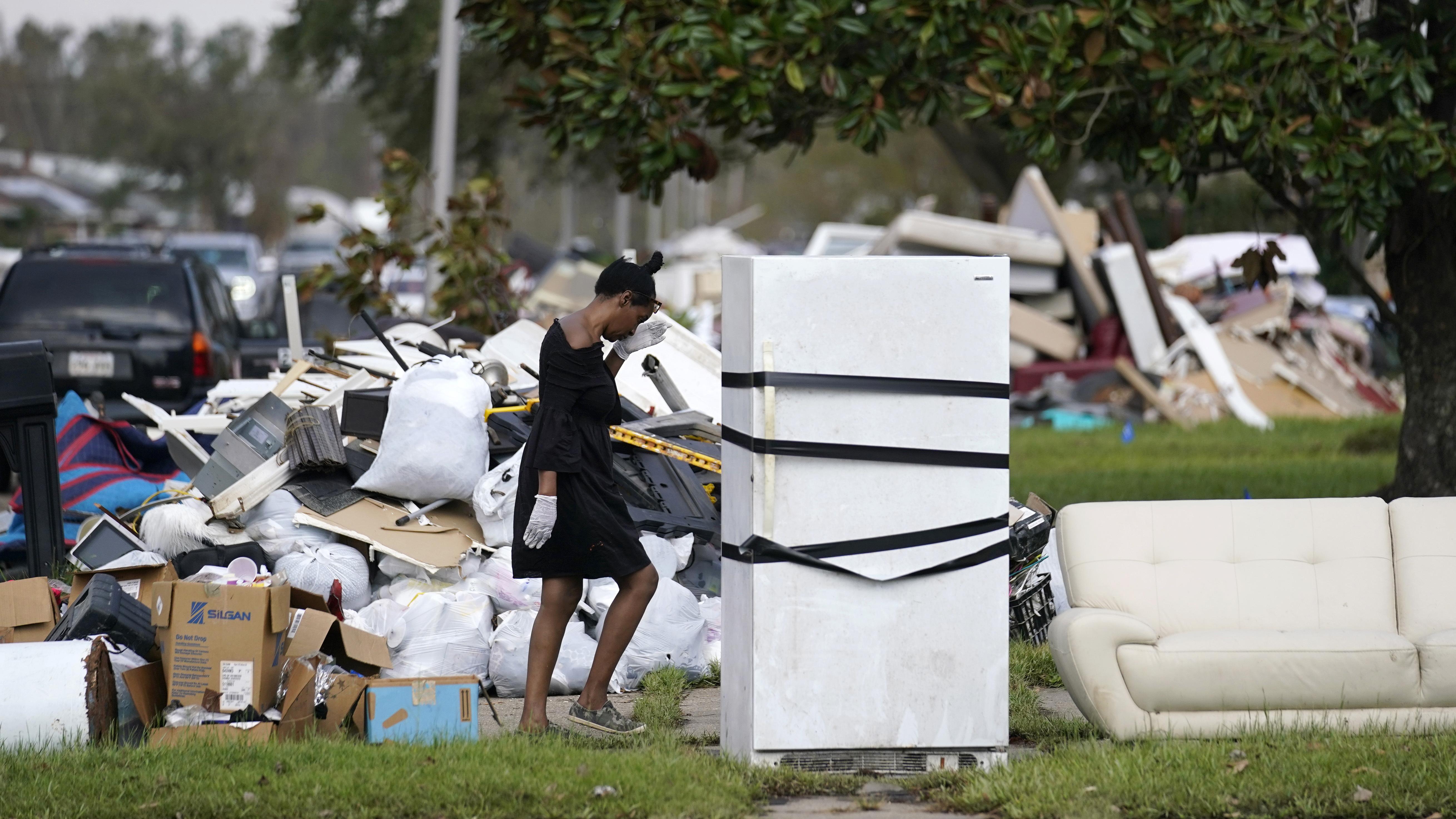
HOUMA, La. (AP) — The death toll in Louisiana from Hurricane Ida rose to 26 Wednesday, after health officials reported 11 additional deaths in New Orleans, mostly older people who perished from the heat. The announcement was grim news amid signs the city was returning to normal with almost fully restored power and a lifted nighttime curfew.
While New Orleans was generally rebounding from the storm, hundreds of thousands of people outside the city remained without electricity and some of the hardest-hit areas still had no water. Across southeastern Louisiana, 250,000 students were unable to return to classrooms 10 days after Ida roared ashore with 150 mph (240 kph) winds.
The latest deaths attributed to Ida happened between Aug. 30 and Monday, but were just confirmed as storm-related by the Orleans Parish coroner, the Louisiana Department of Health said in a statement. Nine of the New Orleans deaths — of people ages 64 to 79 — came from “excessive heat during an extended power outage,” while the two others were from carbon monoxide poisoning, the department said.
More than a million people were left without power, including the entire city of New Orleans, when Ida struck on Aug. 29. The state’s largest power company, Entergy, said it expected to have electricity in the city restored to 90% by Wednesday evening.
Meanwhile, the New Orleans Police Department and Mayor LaToya Cantrell lifted an 8 p.m. to 6 a.m. curfew they had imposed two days after the hurricane hit.
Across New Orleans and southeastern Louisiana, families are still waiting to hear when their children can return to school, as districts assessed hurricane damage. Prior to Ida, schools around Louisiana had been open despite widespread cases of COVID-19, although under a statewide mask mandate for all indoor locations.
“We need to get those kids back with us as soon as we possibly can,” said Superintendent of Education Cade Brumley.
In New Orleans, School Superintendent Henderson Lewis Jr. said damage to schools appeared to be mostly minimal, but power needs to be restored to all buildings, and teachers, staff and families need to return to the city to get schools up and running.
“Now more than ever, our children stand to benefit from the comfort that structured and routine daily schooling can bring,” Lewis said in a statement Wednesday. “So, let’s all come together to reopen our schools quickly and safely.”
Lewis said he expects classes for some will resume as early as next week and that all students will be back a week after that.
No school reopening estimates have been provided for the five parishes that were hardest hit by Hurricane Ida and which are home to about 320,000 people: Terrebonne, Lafourche, St. James, St. Charles and St. John the Baptist. In those parishes, 96% of utility customers were still without power Wednesday.
Bucket trucks and heavy power equipment were ubiquitous, but the task facing linemen remained daunting. Downed power poles and slack or snapped lines were still evident on long stretches of U.S. Highway 90 in St. Charles Parish. Heavy equipment trucks could be seen ferrying new poles to the area.
Farther south, in the Terrebonne Parish city of Houma, trucks with linemen were on every street, and as the day progressed there were signs of progress: Traffic lights started flickering on, although sporadically, on busy Grand Caillou road by early afternoon.
Linemen also were working south of Houma, in rural Terrebonne along Bayou Grand Caillou. But many of the homes were in no shape to connect.
All contents © copyright 2021 Associated Press. All rights reserved
The remainder of this article is available in its entirety at CBN

